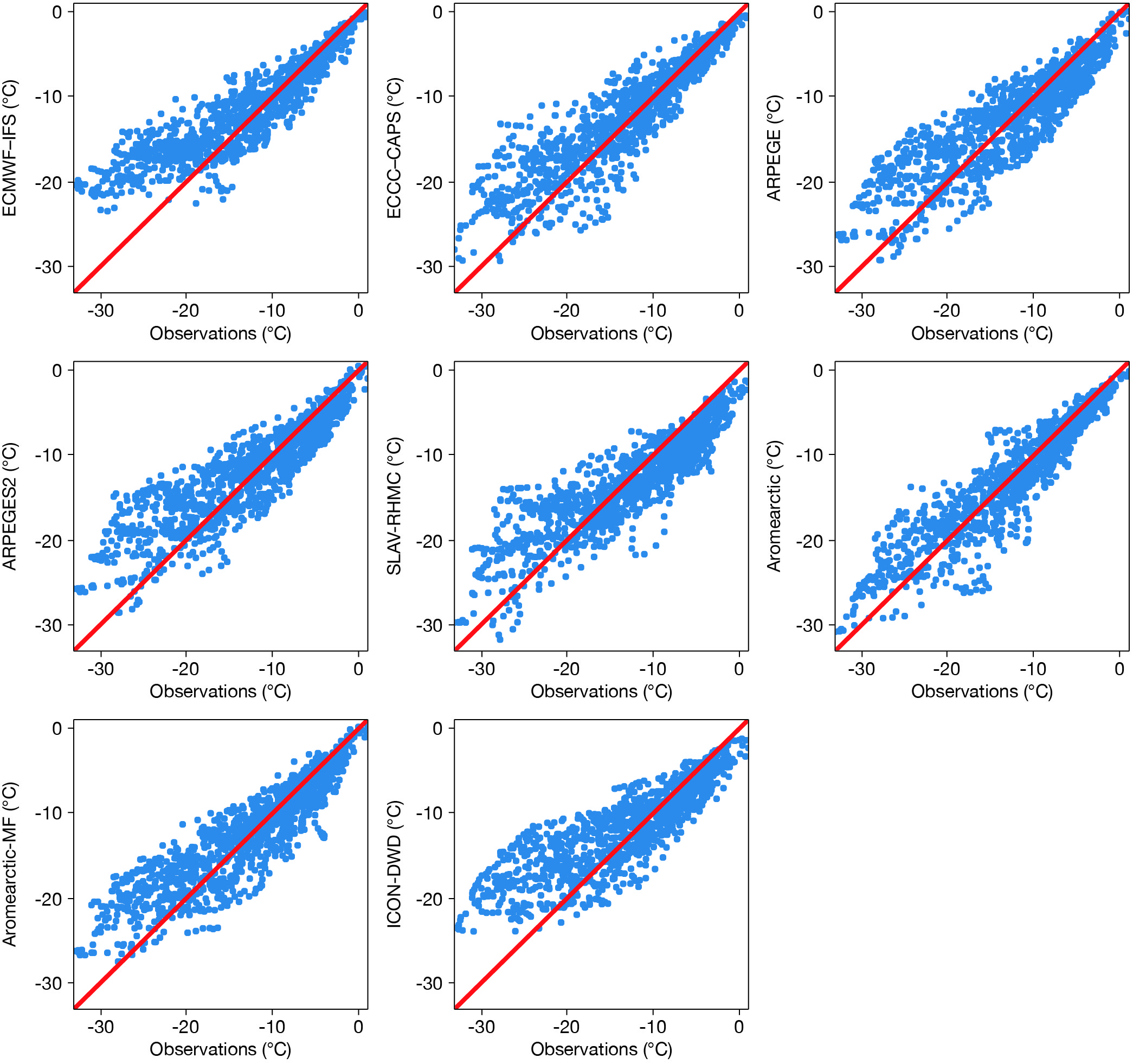A team of modellers, observationalists and data scientists collaborating under the umbrella of the World Meteorological Organization’s Year of Polar Prediction (YOPP) have been working through the complex details of synergistically combining information from Arctic observatories and numerical weather prediction (NWP). They aim to further our understanding of polar meteorology and to assess and improve process representation in the polar regions. The project, known as YOPPsiteMIP, is an international effort and has to date produced forecast data from eight NWP systems (including ECMWF’s Integrated Forecasting System) at 41 polar terrestrial observatories. A number of these systems are also providing output at the MOSAIC ice camp as part of the MOSAIC-Near Realtime Verification Project. The dataset is archived at the YOPP portal, hosted by Met Norway.
Although the quality of weather forecasts in the Arctic is improving, it still lags behind the quality of forecasts in lower latitudes. Arctic regions pose specific challenges related to processes which are historically difficult to model (stable boundary layers, mixed-phase clouds, and atmosphere– snow-ice coupling). Moreover, so far there has been relatively little effort to evaluate processes in weather models using in-situ datasets from the terrestrial Arctic and Antarctic, compared to the situation in mid- latitudes. YOPPsiteMIP aims to address this gap.

While the concept of model inter-comparison is not new, there are novel challenges associated with the YOPPsiteMIP activity:
- The focus is on coupled NWP models, assessing their performance at a process level in the polar environments. This requires the development of consistent time series at specific grid points, with high frequency to model time-step outputs from different NWP centres.
- The observatory data, which includes variables originating from scores of instruments, researchers, institutions, archives and portals, need to be organised into consistent Merged Observatory Data Files (MODFs).
Initially efforts will focus on the YOPP special observing periods (SOP1: Feb–Mar 2018, and SOP2: Jul–Sep 2018, SOP–Southern Hemisphere: Nov–Feb 2018/19) and the MOSAIC year (Sep 2019 to Sep 2020). The YOPPsiteMIP dataset complements the ECMWF-YOPP dataset, which contains spatial fields, albeit at a lower temporal resolution.
An initial evaluation across the models already provides some interesting results. For example, most of the forecast systems exhibit a warm bias in extremely cold conditions. This can be seen in both northern Europe (as illustrated in the second figure) and northern Alaska. Finding common issues like this across models and attributing these to certain processes/ parametrizations, which can then be tackled in community efforts, is a key theme. For example, in all the NWP systems shown, terrestrial snow is represented by a single thermal layer. Recent work at ECMWF, as part of the APPLICATE project, has shown that this bias is partly caused by this simple representation of the snow. Including a multi-layer snow model can improve, but not completely solve, this error in the IFS. Understanding whether this is the case for all the contributing systems would obviously help inform model development choices across the community.

Future plans
The next steps for YOPPsiteMIP are to produce MODFs for each of the sites and to use these in a process-oriented evaluation of the forecasts. The NWP centres, including ECMWF, have been providing input into the design of these files. This is designed to ensure a fair comparison with the forecasts themselves. However, producing standardised MODFs for the observatories is much more challenging than for the forecasts, since it requires bringing together a mixture of routine and research grade observations. A prototype MODF has been produced for Utqiagvik (formerly Barrow) Alaska by the US National Oceanic and Atmospheric Administration (NOAA), and a team has been assembled to begin producing these for other sites according to this template. Once completed, it is expected that the MODFs produced for the polar observatories will provide a valuable resource for benchmarking NWP and climate models, from a process perspective, for many years to come. Further model evaluation using these is planned as part of upcoming projects, including ECMWF’s contribution to INTERACTIII.

